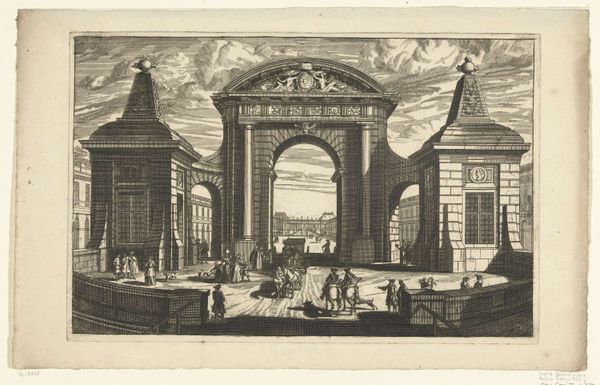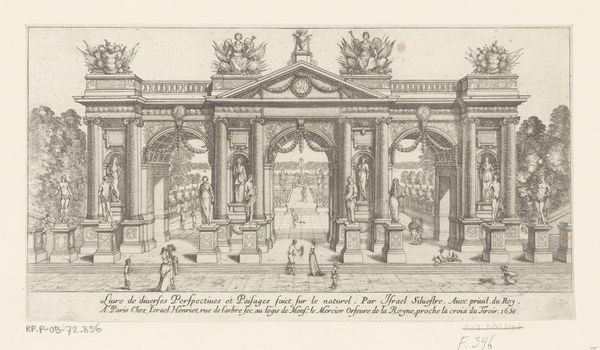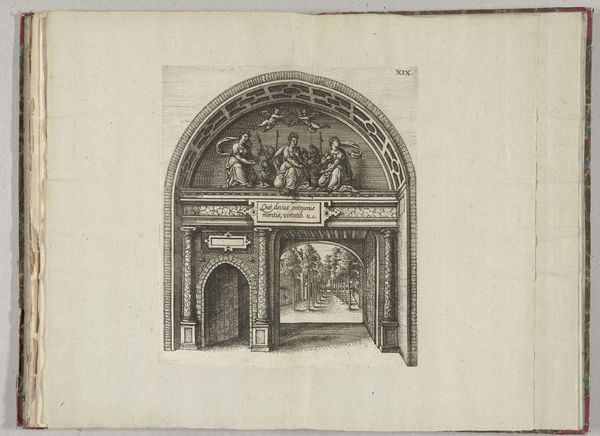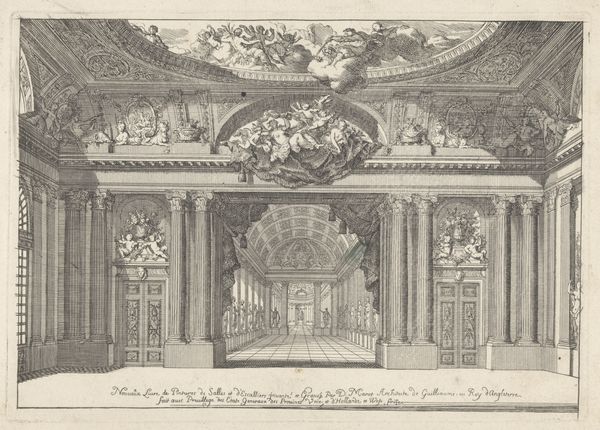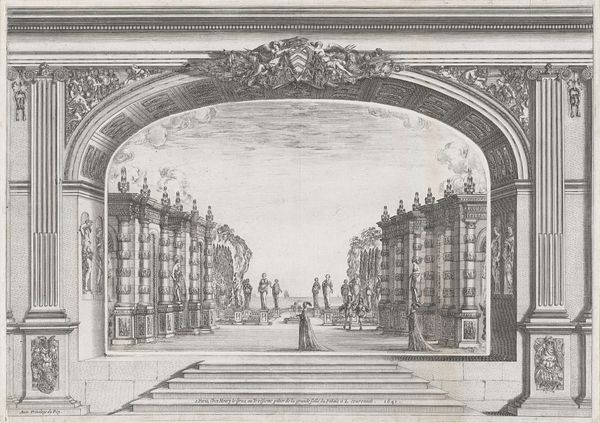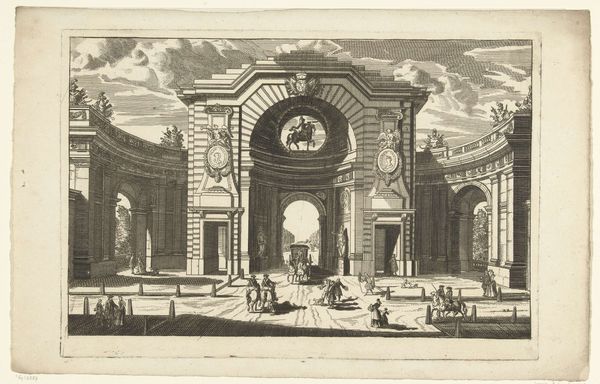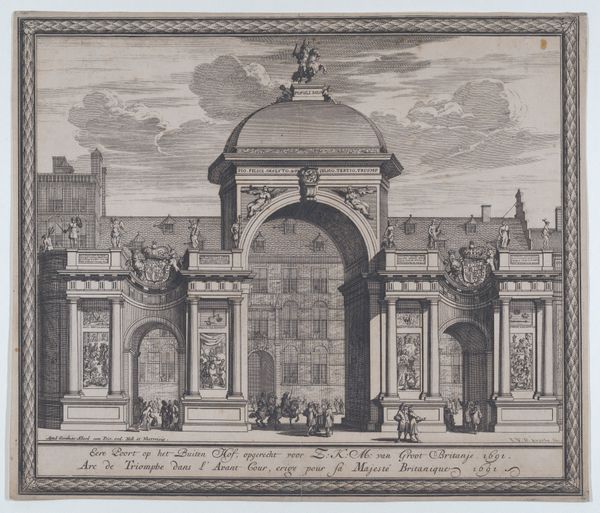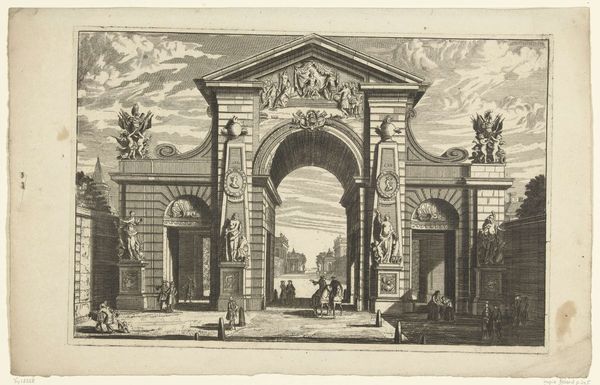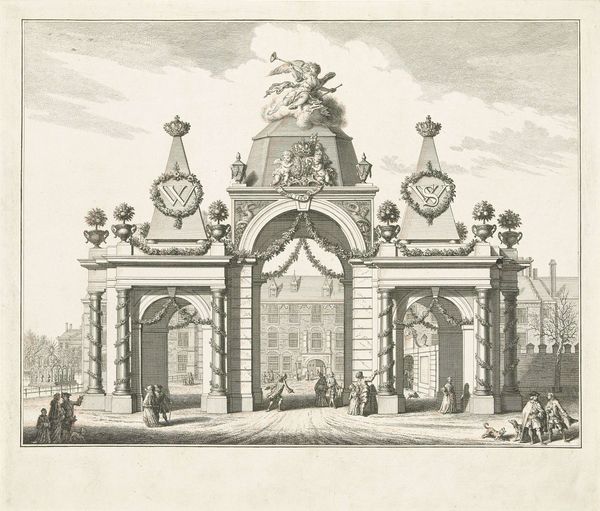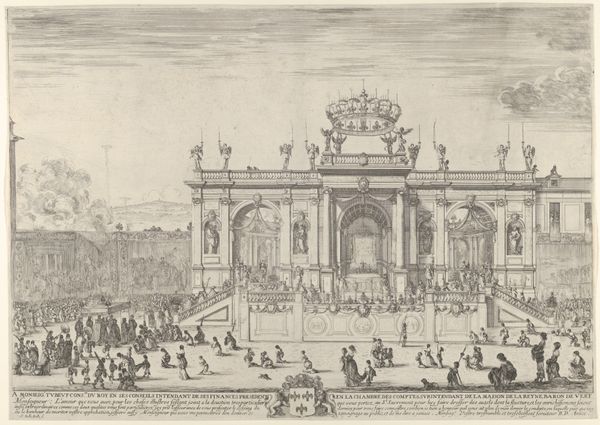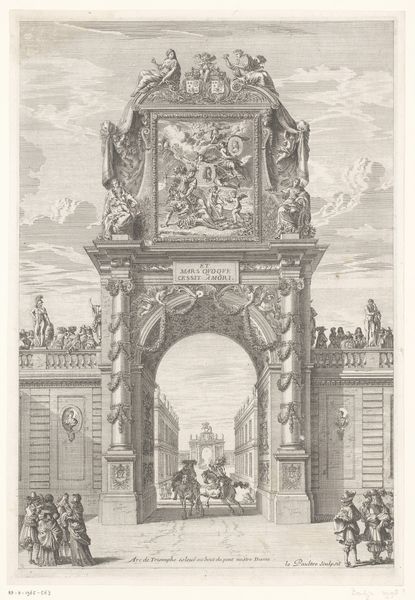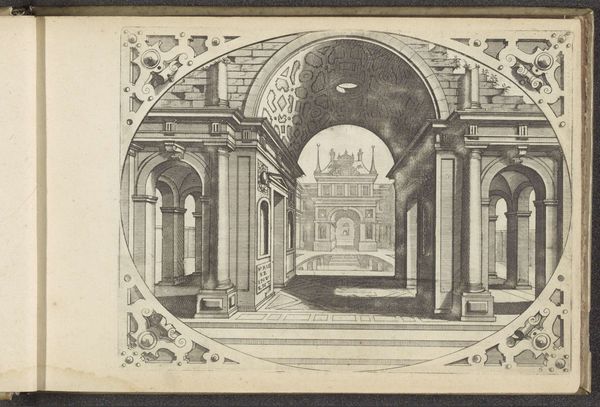
engraving, architecture
#
baroque
#
old engraving style
#
landscape
#
engraving
#
architecture
Dimensions: height 164 mm, width 243 mm
Copyright: Rijks Museum: Open Domain
Curator: Looking at this image, I am immediately transported to a tranquil scene, despite the architectural grandeur. There's a pervasive sense of calm that resonates through the detailed engraving. Editor: I'm drawn to the image as well, the serenity is palpable. This is "Tuinpaviljoen met drie bogen," or "Garden Pavilion with Three Arches," by Jean Lepautre, dating from around 1658 to 1670. It's an engraving now held in the collection of the Rijksmuseum. Curator: Engravings are amazing vehicles for distilling complex cultural aesthetics into reproducible forms. Consider the arches, how they frame the scene, inviting us to explore the space beyond. What comes to mind when you consider the symbols at play? Editor: Indeed. Those arches are heavy with implications. This composition invites a theatrical display of power and taste typical of Baroque aesthetics, where social events became displays of the court's might. Do you get the same feeling? Curator: Yes, definitely! The arrangement is a declaration, yet what does it communicate? I believe the busts above the arches contribute to the dialogue—perhaps as allegories? We've come to see classicism repurposed here. The statues on the roof appear caught mid-action in a very casual manner that is unexpected given the rigidity of Baroque composition. What cultural continuity might this unexpected approach symbolize, as far as visual cues can tell? Editor: The artist clearly played with expectations and employed some visual tricks. The garden is as much the stage as the actual architecture. I believe we can view such displays as performances, the public role of art intertwined with the socio-political theatre of its time. Curator: This blending of indoor and outdoor space underscores a prevailing longing to merge artifice with nature. The very choice of the garden hints to the desire to recreate an idyllic setting within a structured order. And as that choice would be limited by economic power at the time, the meaning embedded within the image becomes amplified, don’t you agree? Editor: I completely concur. A final reflection: the politics of imagery, even in a serene garden pavilion, always reveal the intricate relationship between art, power, and aspiration. Curator: Ultimately, this engraving encourages us to understand not only Baroque taste, but its dreams. And more subtly, perhaps its tensions between different modes of cultural representation and experience.
Comments
No comments
Be the first to comment and join the conversation on the ultimate creative platform.
